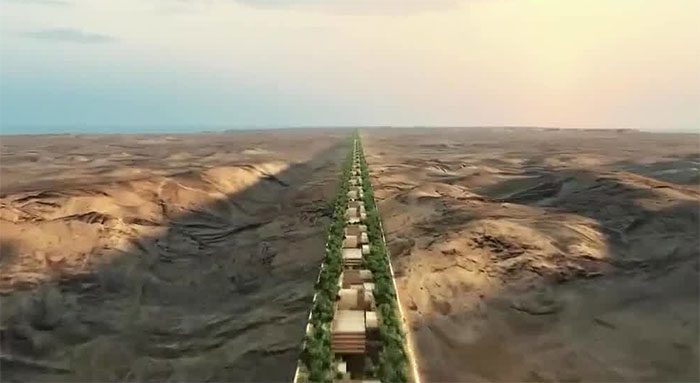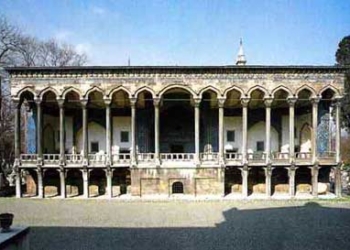Researchers suggest that the design of the 170km-long straight city, The Line, is not optimal for transportation and sustainability.
(Graphic: NEOM)
In October 2022, Saudi Arabia began construction on the straight city project, The Line. While some view this as an ideal eco-city, researchers from the Complexity Science Hub argue that The Line is not a model for future cities. The research team explained their reasoning in a paper published in the journal npj Urban Sustainability, as reported by Phys.org on June 27.
According to the plan, The Line is a city built from scratch in the desert. The project includes two massive, seamless skyscraper lines with living spaces in between. This horizontal skyscraper will stretch 170 kilometers long, 200 meters wide, and 500 meters high, towering over any building in Europe, Africa, and Latin America, extending from the Red Sea to the east.
It is expected that 9 million people could live here, more than any city in Saudi Arabia. This population density would equate to 265,000 people per square kilometer, ten times that of Manhattan and four times that of the central district of Manila, which currently has some of the most densely populated neighborhoods in the world. “We have yet to determine how we could attract so many people to a country of moderate size,” said Rafael Prieto-Curiel, a researcher specializing in cities at the Complexity Science Hub.
Additionally, there are numerous issues that arise regarding mobility. According to Prieto-Curiel, a straight line may be the least efficient shape for a city. Humanity has 50,000 cities, and all of them are round in some way. If we randomly select two people in The Line, on average, they would be 57 kilometers apart. In Johannesburg, a city 50 times larger than The Line, any two people are only 33 kilometers apart. Assuming the walking distance within The Line is one kilometer, only 1.2% of the population would be within walking distance of each other’s homes. This would hinder active mobility, forcing people to rely on public transportation.

According to the plan, the main mode of public transportation will be a high-speed rail system. For people to be within walking distance of train stations, at least 86 stations are necessary, according to researcher Dániel Kondor. As a result, trains will spend too much time stopping at stations and will not be able to achieve high speeds between any two stations.
Consequently, the research team estimates that each trip will take an average of 60 minutes, with at least 47% of the population in The Line spending even longer commuting. Even with additional high-speed rail lines, the benefits remain limited due to transfer times. As a result, residents will still have longer commutes compared to other major cities like Seoul, where 25 million people commute in under 50 minutes. The study indicates that people want to minimize travel time, so efficient transportation plays a key role in the city’s success.
“Cities are not just a collection of semi-detached neighborhoods next to each other. What differentiates a city from smaller settlements is not only its size but also the opportunities outside the neighborhood, such as attending concerts or seeking employment. For this reason, we need to consider citywide transportation,” Kondor explained.
If we transform The straight city “The Line” into a circular city “The Circle” with a radius of 3.3 km, the distance between any two people would only be 2.9 km, and 24% of the population would be within walking distance of each other’s homes. They would be able to engage in most of their mobility (walking, cycling, etc.), making the high-speed rail system unnecessary. Instead, The Circle would have high connectivity, even with a lower density, eliminating the need to construct super-tall buildings.
The Line project emphasizes sustainability in many aspects. For example, there will be no cars within a five-minute walk. This not only saves significant space for infrastructure and parking but also reduces vehicle traffic. Furthermore, all energy will be produced without carbon emissions. However, what is not mentioned here is that building skyscrapers requires a substantial amount of materials and energy.
“Overall, there are many other considerations that contribute to the decision to choose this unique shape, such as promotion or creating viral videos on social media. Nevertheless, understanding the consequences is crucial, especially if The Line is seen as a model for modern construction technology and urban planning,” Prieto-Curiel stated.





















































